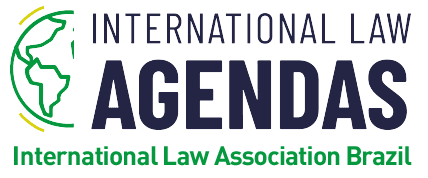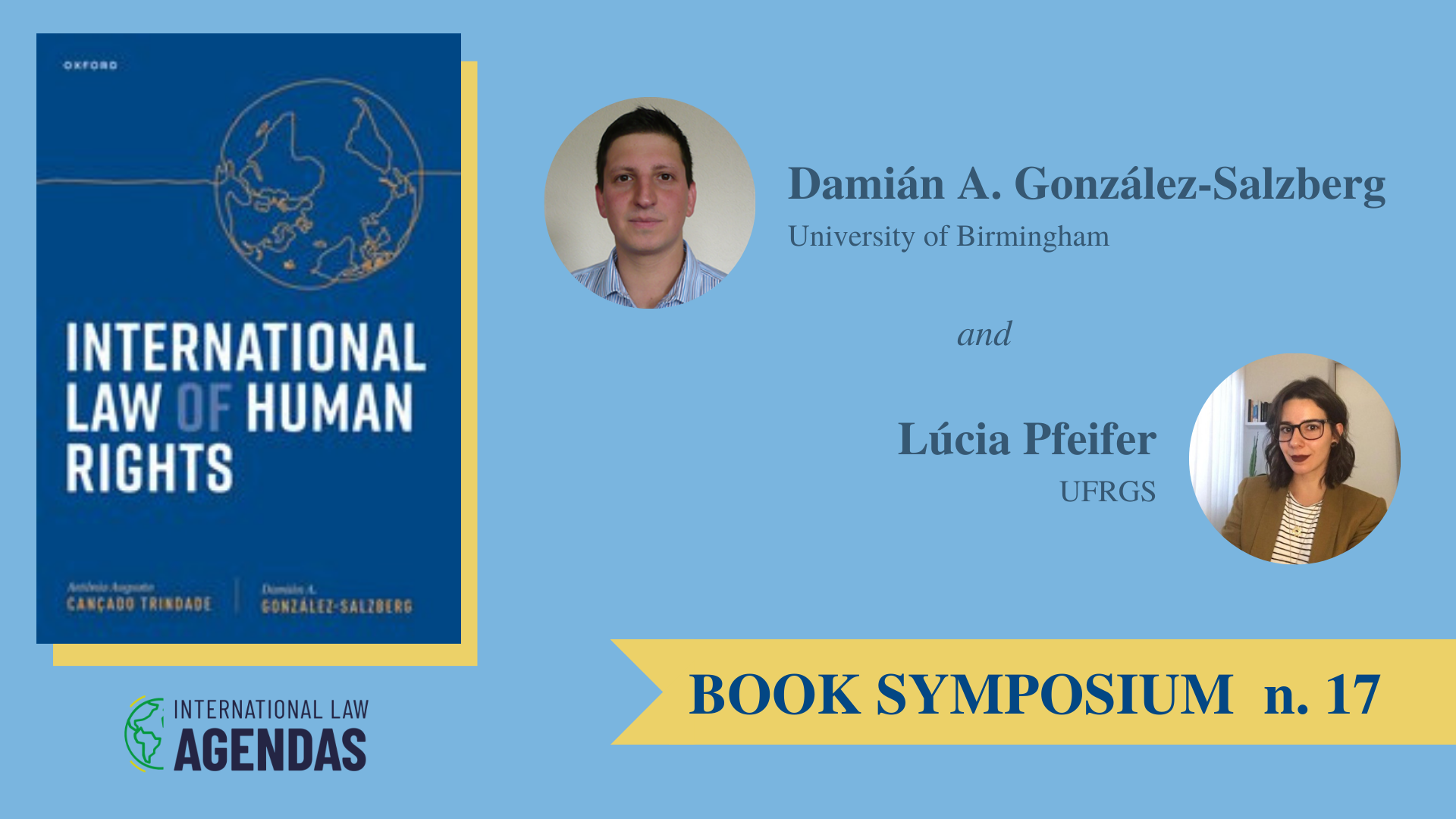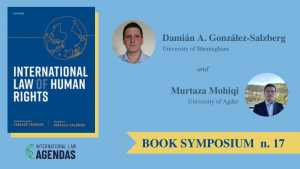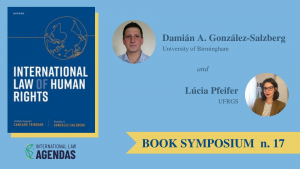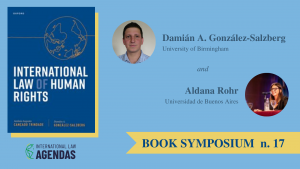Judge Antônio Augusto Cançado Trindade is often thought of as royalty when discussing International Law of Human Rights. In his last work elaborated in partnership with Damián A. Gonzalez-Salzberg, such statement would only confirm this reputation. With a thorough coverage of the field of Human Rights, this book aims higher than concepts or explaining how the International System operates, and its readers are constantly being challenged to question and reflect on the matters exposed in each chapter.
The path laid by the former judge of the Inter-American Court of Human Rights (IACHR) and the International Court of Justice (ICJ) is, still, running its course with his last published work initiated in January 2018 which he, unfortunately, was not able to see through due to his own passing by May 2022. Even so, the co-author, Damián A. Gonzalez-Salzberg was able to fulfil this endeavour, finishing the work and, keenly, emphasizing that Judge Cançado Trindade’s inspiring contributions to the field would, as him, live forever. With an extremely moving, and worth-mentioning, preface, Damián Gonzalez-Salzberg shares his experiences of collaborating with Judge Cançado Trindade and stresses the importance of the former’s work and his ideal of improving the world we live in.
The book is divided into four parts, being Part 1 focused on the foundation, history and the legal framework behind Human Rights; Part 2 revolves around the Universal System while Part 3, the Regional Systems and Part 4 elaborates on Substantive Rights.
Briefly, one can notice that the work in question aims to cover all significant aspects when it comes to the field of International Law of Human Rights. By the usage of a time lens, the authors are able to demonstrate a well-covered evolution of the western mindset on Human Rights and the normative results of such journey, explaining how the debate on Human Rights is, truly, “the ethos of our time” (p. 59).
However, one cannot presume, by the brief summary of the book parts, that such can come across as a Human Rights manual with extensively doctrines and flat didactics, exposing the forming aspects of the field, lacking critiques and innovative perspectives. On the contrary, if there is anything that should be highlighted is that of the criticism against the main western optics on Human Rights, since its very beginning.
As stated by the authors themselves, a critique towards Human Rights does not necessarily imply that such vision is positioned against it, but quite the opposite: “a ‘critique’ is not about expressing disagreement or stating that something is not right, but a ‘matter of pointing out on what kinds of assumptions, what kinds of familiar unchallenged, unconsidered modes of thought, the practices that we accept rest” (p. 39). In fact, following the end of every chapter, there is a section entitled “Further Reflections” – which was a rather appropriate choice by the authors not to limit the reader’s conclusions to recommended readings, but by exposing a continuous line of thought and critical thinking.
Following the critiques stated, the central point of convergence in terms of Human Rights, that being, its universality, is discussed. For example, when bringing up the drafting of the Universal Declaration of Human Rights, there is an intrinsically debate about whether the document is truly universal. To question that is to stablish universalism with the core aspects of what it was thought to be universal at the time, that being: male, white and European. In fact, disclaiming ideas about such universality were actually brought by non-western delegations, as the authors confided, when elaborating such document.
The content of the critiques presented are a key ingredient to the book’s novelty. Whether postcolonial, Marxist, or feminist critiques, the publication reaches its zenith by presenting perspectives that duel with the conservative and western approaches that embody the present state of the International Law of Human Rights. Thus, there is a significant encouragement for readers to engage in critical thinking when getting across ideas that, once thought in the beginning of the creation of International Law as outstandingly innovative, are nowadays, as demonstrated, outdated.
Another aspect that caught this reviewer’s attention is the philosophical content of the work, that aims to bring necessary objects for reflection. One can come across this outstanding ability of the authors for bringing slightly trivial subjects to contemplation. It is rather a poetic way to give the subject of time a position of consideration when weighting the formation and expansion of International Law of Human Rights, in line in particular with the late Judge Cançado Trindade’s often belle-lettrist approach to his own writing. By stating that “the time of human beings is not the time of the stars” (p. 107), Cançado Trindade stresses how legal solutions can integrate human beings as one, bringing into consideration the impact of legal actions and its link to our existence. Although, the convergent point of the time of human beings and the time of the stars, the former not acknowledging the first, is that they both are implacable.
Considering the specialty of Judge Cançado Trindade, in Part II, a section is dedicated to his opinions and reasoning during his term at the International Court of Justice, as a tribute. On cases concerning death penalties, genocide and the use of nuclear weapons, Judge Cançado Trindade issued lengthy, expressive, and idiosyncratic separate and dissenting opinions from the Court’s majority, making relevant contributions towards the development of human rights within that jurisdiction. The divergences at hand are paramount, once they somehow denunciate the conservativeness of the Court and criticize the approaches adopted by it as the principal judicial organ of the United Nations – declaring that the Court was taking the opposite path of the progressive development of International Law.
The field of International Law of Human Rights, as demonstrated by the authors, has, as a task, to maintain its pace alongside the changes of society, being flexible and adaptable, in order to provide the necessary means of protection to individuals. Also, they both highlight the challenges faced by UN and monitoring bodies when it comes to human and financial resources, as well as for States to bring in adequate candidates for the committees at hand.
Although an ambitious goal to be achieved – that is, to scan all pertinent aspects of International Law of Human Rights –, the expectation is, by all accounts, met. The authors are keen to fully explore and describe the political processes that took place since the origins of International Law, not turning a blind eye to the critical debates involved, especially the ones that were only able to surface after a maturing growth of the field. Despite the density of the matter in question, the reading is fluid and pleasant. Surely, this book on International Law of Human Rights distinguishes itself for its capacity to teach and to question the present state of the field and how the international community can improve it.
-

Master's Program in Law (PPGD), Federal University of Rio Grande do Sul (UFRGS)
